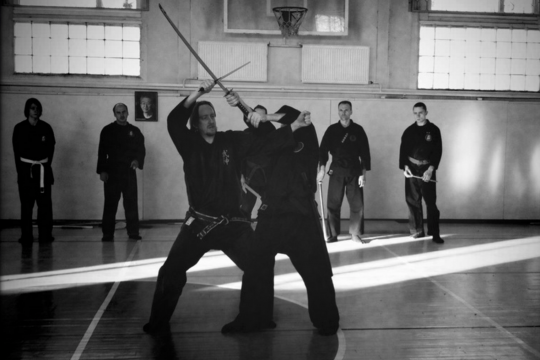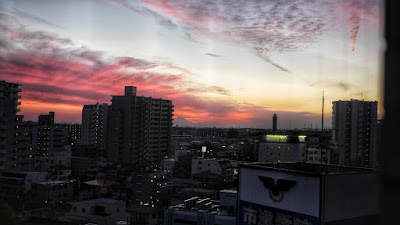It Is Your Fault!
From Shiro Kuma by kumablog
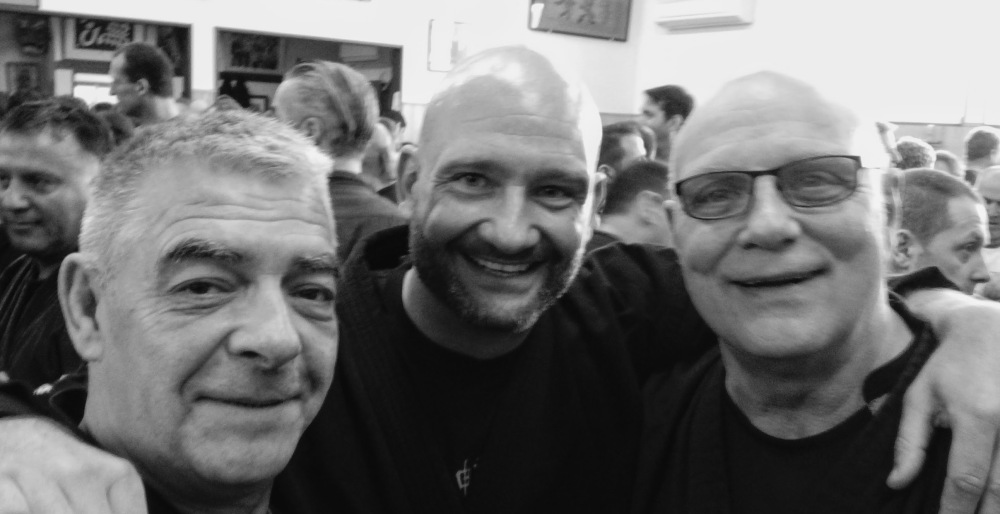 It is your fault if you cannot do the movements correctly. I found a quote by Sensei saying, “Humans have yet to dwell upon the consequences of their actions. Most people spend their time finding fault in the action of others rather than their own.” This is Sekininkan, the sense of responsibility. (1)
It is your fault if you cannot do the movements correctly. I found a quote by Sensei saying, “Humans have yet to dwell upon the consequences of their actions. Most people spend their time finding fault in the action of others rather than their own.” This is Sekininkan, the sense of responsibility. (1)
On the mats, there is no way to escape your Sekininkan. When Uke’s fist hits your face, you cannot blame him for your lack of ability. And this is why I love Budō! In Budō, whatever wrong is happening to you is your fault. You have to accept it. With a sense of responsibility, you are Sekininwomotsu, responsible for your actions. Whether they are good or bad. (2)
Too often in our modern world, we don’t take responsibility for the wrong things we did. As Sensei said, “we find fault in the action of others.” When you get hit, it is always because Uke did not attack in the right way. When you cannot throw, it is because your partner is too stiff or too soft. The responsibility for your actions is one of the many lessons you learn when you train Budō.
It is your fault if you are not as good as you would like. You cannot download “excellence”! Your rank will not give you magic enlightenment! If your Taijutsu is not the best, it is your fault, by lack of training.
I saw a facebook video by my friend Cavin Pietzsch published two days ago. (3) He explains how necessary to train solo to get better. Here are some excerpts from his post:
“In martial arts, it is vital to train on your own because dōjō time is never enough to shape up the details.”
That is so true. I had the chance to open a few dōjō for my teacher, back at the end of the 80s. At first, no one would show up, so I had many hours of lonely training where I could polish my Taijutsu and make it better. I am sure that the level I have today comes from these self-training hours I spent back then. Nothing resists to hard work. Hatsumi Sensei used to say that “the dōjō is 6 to 10 hours a week; life is 24 hours a day! train more.”
“Training alone to improve your basics and work on your weaknesses is getting you out of your comfort zone.“
When you are alone, your choice of moves is quite limited. You do not have to interact with other humans. Thus, every essential step becomes a school of excellence. It impacts the quality of your body flows profoundly. Many people complain they cannot train because they have no one to train with. That is a lie. And another example of not taking responsibility.
During your life, the only success comes if you evolve, change, leave your comfort zone, and recreate yourself endlessly. Life is about blooming, it is not about getting stuck. It is always your fault if you feel you are stagnating. Life is about permanent change, and that is why you should adapt to the flow. Each time you stop, you move backward as things are continuing their course forward.
So, please stop blaming others for your lack of competence. Face your weaknesses and become the best of yourself.
As Cavin puts it: “(when) you change, (you) understand one of the basic principles of Bujinkan: Banpen Fugyō.” (4) (5)
_______________________________
1 責任感, Sekininkan; the sense of responsibility
2 責任を持つ, Sekininwomotsu; to be responsible for; to bear the responsibility of
3Watch here:
https://m.facebook.com/story.php?story_fbid=10221492599090686&id=1422468549
4 万変不驚, Banpen Fugyō; 10 000 changes, no surprise.
5 Banpen Fugyō: read this interesting article:
https://classicalmartialartsresearch.wordpress.com/phraseology/banpen-fugyo-%E4%B8%87%E5%A4%89%E4%B8%8D%E9%A9%9A/
Become a member of the Koi community, join www.koimartialart.com and get access to 150 Gb of Bujinkan videos
…
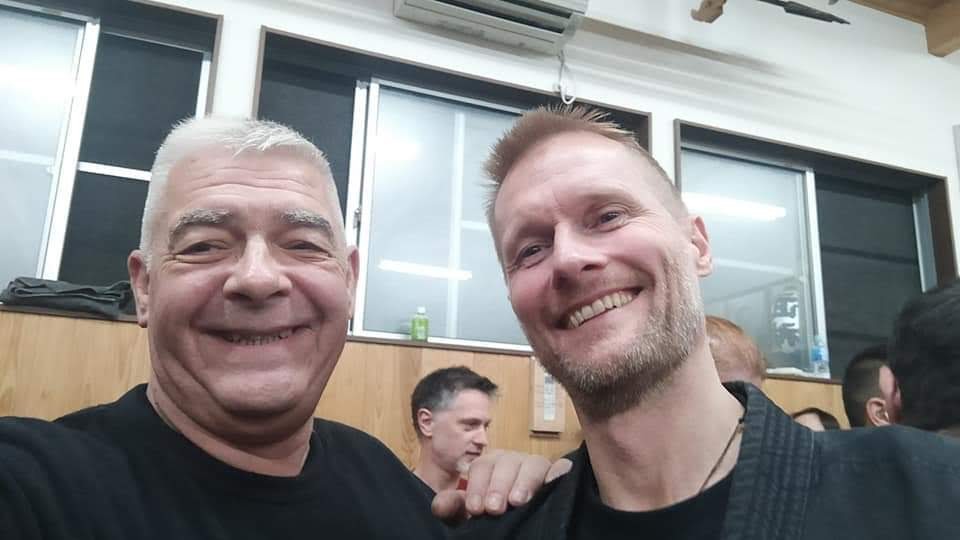 My friend Philip Pihl wrote from Japan yesterday after class. Hatsumi Sensei expressed his mastery of Mutō Dori using the body, the sword, and the knife. Mutō Dori is still the major training point to learn and understand how to express it with our Taijutsu.
My friend Philip Pihl wrote from Japan yesterday after class. Hatsumi Sensei expressed his mastery of Mutō Dori using the body, the sword, and the knife. Mutō Dori is still the major training point to learn and understand how to express it with our Taijutsu. 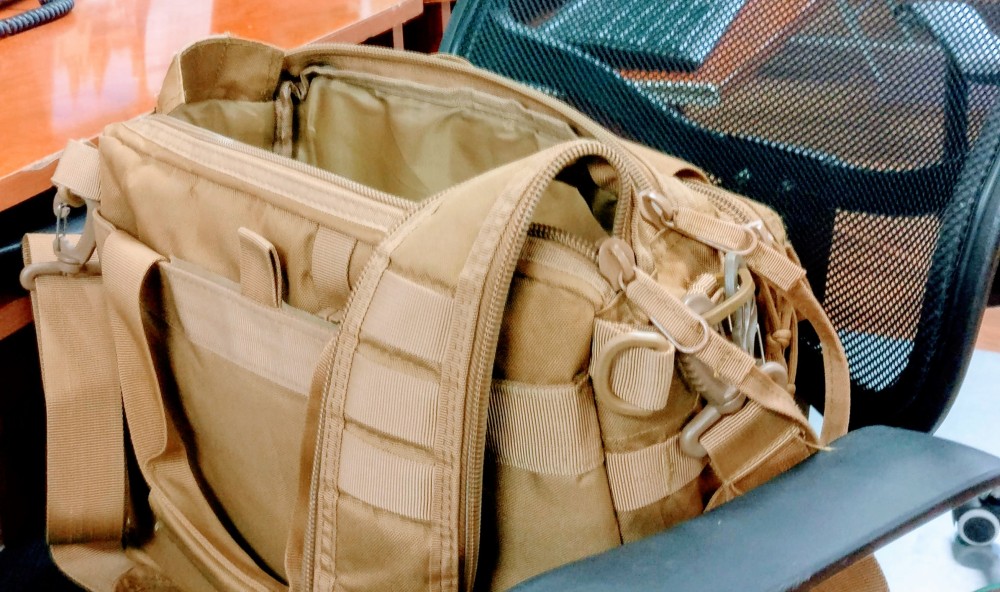 When you go out for a trek in the mountains, you carry a backpack. Everything you might need during the long hours of walking is inside.
When you go out for a trek in the mountains, you carry a backpack. Everything you might need during the long hours of walking is inside.


